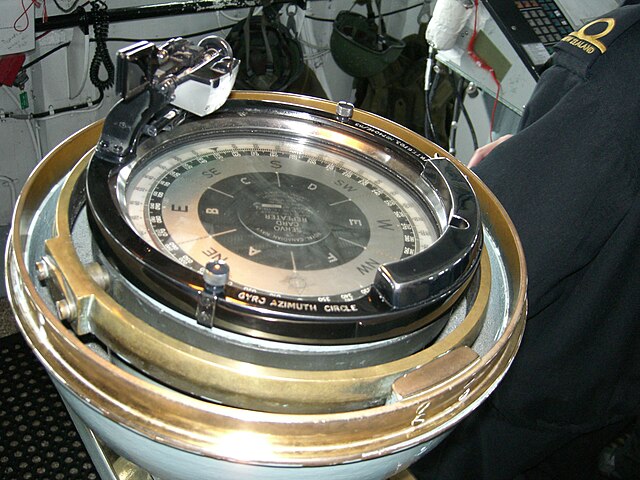Yugoslav submarine Hrabri
Hrabri (Brave) was the lead boat of the Hrabri-class submarines; built for the Kingdom of Serbs, Croats and Slovenes– Yugoslavia by the Vickers-Armstrong Naval Yard in the United Kingdom. Launched in 1927, her design was based on the British L-class submarine of World War I, and was built using parts from an L-class submarine that was never completed. The Hrabri-class were the first submarines to serve in the Royal Yugoslav Navy (KM), and after extensive sea trials and testing Hrabri sailed from the UK to the Adriatic coast of Yugoslavia, arriving in April 1928. The submarine was armed with six bow-mounted 533 mm (21 in) torpedo tubes, two 102 mm (4 in) deck guns, one QF 2-pounder L/39 anti-aircraft gun and two machine guns. Its maximum diving depth was restricted to 55 metres (180 ft) by Yugoslav naval regulations.
One of the Yugoslav-initiated inclusions on Hrabri was the installation of a gyrocompass salvaged from a former Austro-Hungarian ship.
Hrabri was equipped with a single Vickers QF 2-pounder (40 mm (1.6 in)) L/39 gun as her principal anti-aircraft weapon
The Hrabri class of submarines consisted of two vessels built for the Kingdom of Serbs, Croats and Slovenes – Yugoslavia from 1929 on – by Vickers-Armstrong in the United Kingdom. Launched in 1927, the boats were named Hrabri (Brave) and Nebojša (Fearless). Their design was based on that of the British L-class submarine of World War I, and they were built using parts from L-class submarines that were never completed. The Hrabri-class were the first submarines to serve in the Royal Yugoslav Navy (KM), and after extensive sea trials and testing they sailed from the UK to the Adriatic coast of Yugoslavia, arriving in April 1928. They were armed with six bow-mounted 533 mm (21 in) torpedo tubes, two 102 mm (4 in) deck guns, one QF 2-pounder L/39 anti-aircraft gun and two machine guns. Their maximum diving depth was restricted to 55 metres (180 ft) by Yugoslav naval regulations.
Nebojša was named after the eponymous medieval tower near Belgrade
One of the Yugoslav-initiated inclusions was the installation of gyrocompasses salvaged from former Austro-Hungarian ships.
Each boat was equipped with a single Vickers QF 2-pounder (40 mm (1.6 in)) L/39 gun as its principal anti-aircraft weapon



